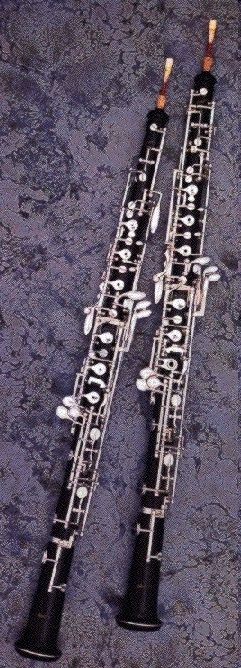With “Oboe Overload” ICE doubles the double-reed pleasure
The stalwart sound of the oboe propelled it to the head of the woodwind section where to this day, it sounds the pitch that ensembles and orchestras tune to.
And yet, as the most exposed double-reed beast of the wind family, the oboe requires its practitioners to master the art of controlling not one, but two unpredictable reeds at the same time, but also to become experts at carving those reeds to precise, personal specifications of one’s own embouchure, air pressure abilities, and preferred personal timbre.
No wonder oboists have been the traditional butt of instrumental jokes and yet, when it all comes together, there are few sounds more compelling than that of a virtuoso oboist who has managed to tame the beast.
If one double reed is good, then two double reeds are quadruple the fun was the apparent logic behind Friday evening’s “Oboe Overload” concert presented by the International Contemporary Ensemble — ICE, for short — at the Museum of Contemporary Photography. Nick Masterson and James Austin Smith were the perfect oboe advocates, both as alternating soloists and as worthy protagonists in a diverse, hour-long intermission-less concert of contemporary oboe music.
It is difficult to imagine how radical Christian Wolff’s for 1, 2, or 3 people would have sounded more than 45 years ago with its use of multiphonics, long silences and performer theatrics that include foot stomps and scraping the music stand. This may have been extreme stuff back in 1964, but such affectations for their own sake come across rather old hat now. Underlying these gestures are chromatic cells that tend to climax upward and never really develop or manage to get off the ground.
Luciano Berio began his series of solo instrumental pieces called Sequenzas back in 1958 and continued to compose as well as revise earlier versions of these throughout his life. Sequenza VIIa is a 2000 revision of his 1969 solo oboe piece Sequenza VII, here performed by Austin Smith.
The newer version requires the performer to play against a pre-recorded pedal point of himself and elaborate upon same at times in an improvisational-like manner. Like the Wolff piece, the motivic material is chromatic but because of the pedal point, its tonal center remains constantly in our ear. The gestures are developed into more elaborate lines and tend to climax on tritones achieved against the pedal point or overtones exaggerated by the use of multiphonics.
We do not get a chance to hear much in the way of late Berio, who died in 2003, so this was a fascinating glimpse into some of his later thoughts: cross-fertilizing his earlier interest in electronic music with a series of solo pieces that he revisited and expanded later in life.
The most interesting piece on the program, however, was Jonathon Harvey’s 1987 Ricercare una melodia, which has a solo oboe (Nick Masterson, in this case) play against himself via electronic delay in ways that sometimes mirror and sometimes expand upon what has been performed.
The compelling climax occurs when the delay slows down the faux oboe to a point where it almost sounds like a hybrid between a bass clarinet and bass flute and then this unique timbre plays multiphonics which form a fascinating sonority against the “live” oboe in its natural sound habitat.
Also on the program was the second performance (the program listed it as a world premiere) of Bradley Balliett’s Slow-Burning Sarabande, which the composer himself introduced as attempting to combine both the courtly and sensual forms of the sarabande, a dance form in three with an emphasis on the second beat. The irony here was that the constant musical colliding between Masterson and Austin Smith was such for the sarabande form to be virtually indiscernible amongst the cacophonous chatter.
The evening ended with Michael Finnissy’s Yso, a 2008 piece that has two oboes seek to recall the type of mournful Albanian folk-singing that accompanies traditional funeral processions. Both Masterson and Austin Smith did an evocative and artful job of approximating the desolate dive-bombing glissandi that characterize this type of folk music.
Posted in Performances





